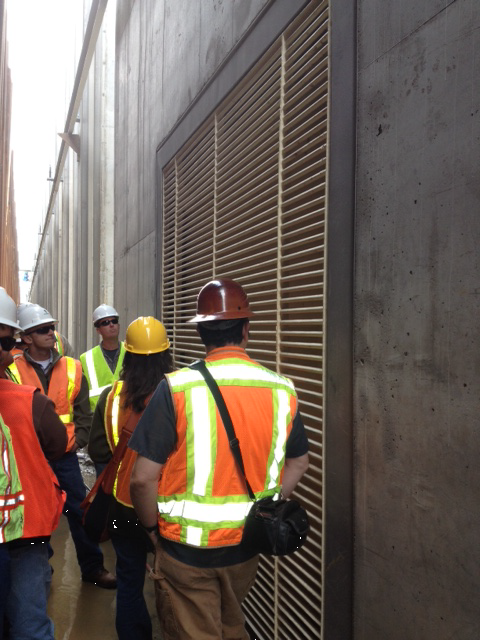The Myth of the Salmon “Motels”
As previously discussed in Parts 1 and 2 of this series, due to the poor intake locations of the Twin Tunnels, the unacceptably low sweeping flows past the intakes’ fish screens, and exceedingly and harmfully long exposure time of young salmon to the screens, the fish will encounter a formidable gauntlet while attempting to migrate to the ocean. The Twin-Tunnels project proponents begrudgingly realized that the daunting length of the three fish screens will likely result in salmon impingement and other problems. Their solution? Slap on yet another unproven measure to supposedly provide temporary “refuge” for the weakened fish traversing the long screens. As stated in the 2016 WaterFix Final EIR/EIS1:
“Because of the length of the screens and extended fish exposure to their influence (screens and cleaners), fish refugia areas have been recommended to be incorporated into the screen design of the intakes (FFTT 2011). These areas would consist of small areas created within the columns between the fish screens that will provide small fish resting areas and protected cover from predators. Design concepts for fish refugia are still in their infancy and are usually site-specific, with designs recommended by the fish agencies (Svoboda 2013).”
Essentially, they have recommended embedding miniature, shallow cages (Figure 1) in concrete columns placed between the screens, trusting that as the salmon inevitably become exhausted and by some means avoid being squished by the screen wiper blades (referred to as “cleaners” in the statement above), the fish will somehow enter the small cages and avoid mortal injury.

Figure 1. Example of a so-called “refuge” for juvenile salmon envisioned for the Twin Tunnels’ intakes. This particular structure (dewatered during construction) was installed at a fish screen in Red Bluff, CA and, to this author’s knowledge, has never been tested. Photo is from Svoboda 2013.
Envision a weary human traveler driving from New York to L.A. Eventually, the traveler checks into a motel to rest and emerge the next morning with renewed energy to continue the arduous journey to his/her final destination. Such is the basic concept for salmon at the Twin Tunnels’ intakes. Essentially, the Twin Tunnels’ proponents have suggested providing “motels” in the WaterFix intakes to theoretically provide a respite for the fatigued salmon on their downstream voyage. To continue surviving this gauntlet, once the small fish supposedly enter a motel, the fish ultimately have to leave and continue along the screens until, in theory, another motel is fortuitously encountered. Of course and unfortunately, if salmon enter these motels, so can massive amounts of riverine debris; the resulting limited space, if any, will have to be shared. Many of these highly experimental motels are proposed for each of the three huge fish screens.
This salmon motel design has never been actually tested in a river and, based on my experience from countless hours of underwater observations of young salmon, has an extremely high probability of failure. I believe this was sort of a “Hail-Mary” attempt to avoid serious scrutiny of likely fish impingement and other problems. This concept was loosely founded on significant discoveries I made when conducting underwater inspections of a fish screen on the Sacramento River and found large numbers of young salmon residing in a very large, deep and wide chamber between trash racks and the screen (see: Salmon Discovery 1 and Salmon Discovery 2). Based on those findings, I offered a different promising bioengineering alternative for the proposed WaterFix fish screens; it was ignored.
Next in the Series: Ring the Dinner Bell!
- Environmental Impact Report/Environmental Impact Statement ↩
